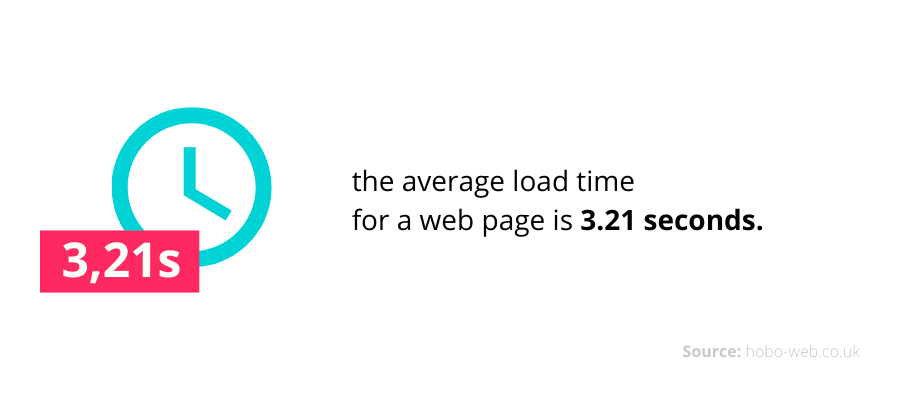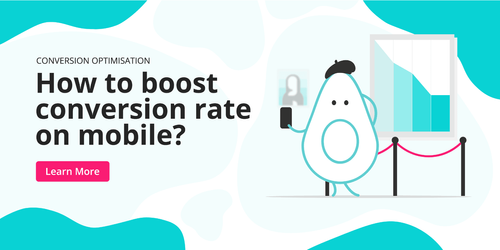Conversion Optimisation
20.02.2023
8 minutes read
How Your Choice of Content Management System Can Impact Your Conversion Rates?
While we obsess with A/B testing, messaging, content creation, and page design, an often overlooked factor in the drive for improving conversion rates is the underlying content management system (CMS platform).

List of Contents
Web Content Management System
While we obsess with A/B testing, messaging, content creation, and page design, an often overlooked factor in the drive for improving conversion rates is the underlying content management system (CMS platform). This guest post from Alan Gleeson, the CEO, and Co-Founder of Contento.io a Headless CMS for B2B and SaaS companies outlines what you need to be aware of.
The Context
For anyone working in B2B SaaS, lead generation is a primary concern for the sales and marketing function. The conversion rate on a webpage will depend on several factors, including the number of visitors, the quality of these visitors (in terms of how aligned with your Ideal Customer Profile they are), and then the on-page elements (ranging from the value proposition to the messaging to the Call to Action).
Web Pages
The key pages for conversions on most B2B sites tend to be the following:
- Home Page
- Pricing Page
- Product Page
- Landing Page(s) for paid acquisition
A primary goal is to get more traffic to these pages. But it can’t be any old traffic. Ideally, your marketing strategy means that you are building awareness and profile on sites related to your core proposition (or at the very least sites where your Ideal Customer Profiles (ICPs) /Personas are present.
Similarly, your content strategy should be aligned with relevant and structured content that help your ICP’s do a better job in their day-to-day lives. Again a tight digital content strategy can also help attract the right types of eyeballs.
It is then a case of ensuring that you have well-designed landing pages and core site pages where your messaging is compelling and that you are offering value as well as access to your core offering. This primary Call to Action (CTA) will usually be to either “Sign up” for a Demo or to get access to an application in the form of “Get Started”.
Most marketing leaders will be measuring the conversion rates on these web pages. Alongside the raw conversion data, it is important to have a quality measure to ensure that conversions are the right types - this could include a target % of leads that the sales team has a positive discovery call with.

Improving conversions on the acquisition side is a typical goal for most SaaS companies and a common route to achieve this is to:
- create a duplicate landing page,
- change some elements,
- and to A/B test it.
However, I believe there is a missing piece here.
The challenges with this approach are as follows:
- Many B2B / SaaS companies have low traffic volumes so it can be very difficult to be confident (in terms of statistical significance) with results in a short period of time;
- Many marketing functions consist of generalists (particularly early-stage ones) and thus experience in crafting a rigorous A/B test is suspect, to say the least;
- It can also be expensive as you may need to boost eyeballs using paid acquisition e.g. Google search engines so the cost to run the tests can add up.
NB I am making an assumption here of a compelling value proposition, with clearly differentiated messaging. After all, if people land on the site and find the value proposition in digital content is weak or the offering is unclear, the ability to move the conversion rate needle is severely hampered.
The Missing Piece
But the key piece missing here is that there may be an issue missing in plain sight that could be worth exploring first.
The page speed of the 4 key pages listed above.
There are several page speed tests that can be done using tools like Pingdom, and PageSpeed Insights (Google) which you can use to test the speed of your core pages.
With the likes of Pingdom it is also important to test the site speed using servers in your core geographies and not just the web server from where you are located. So if you are based in London, but the bulk of your target audience are in the US you should test on US servers.
What I have found on numerous occasions running tests like these is that the results can be painfully slow overseas. The in-office experience is not representative of the experience of your ICP’s (your site may be cached and the server located close by).
In short, slow sites mean one thing - depressed conversion rates.
Historically, for many marketing teams the first port of call is to try and identify which ‘on-page’ elements are slowing down the site. However, as I argue below there may be a bigger underlying issue to consider first. What site speed should you be looking for?

According to Google: The probability of bounce increases 32% as page load time goes from 1 second to 3 seconds, 1s to 5s the probability if bounce increases to 90%.
Based on this data I’d be looking to target a page load time of under 1 second.
Can this be achieved on a traditional CMS like WordPress based site?
I don’t think so.
However, I go back to a key point - blazingly fast website speed is of utmost importance for high traffic sites, with significant daily basket spend or ones where moving the needle on conversion rates is paramount.
If you are running a simple consultancy website the math on eeking out conversion gains on the back of an not insignificant investment simply won’t work. For those where marginal gains will likely make a difference, the focus should thus be on the Content Management System (CMS) initially to ensure there are no structural issues to rectify first.
Content Management Systems (CMS)
A primary cause of slow sites is the underlying Content Management System or CMS software.
For those using popular content management systems like WordPress, the results can be painfully slow. Over time members of the marketing team may have added more and more WordPress PlugIns, and images that were not compressed and the page load time can be really poor. It is one of the reasons the category of Headless CMS is taking off.
What is a Headless CMS and Why Are They Popular?
A Headless CMS is an approach to website building that separates the front end and the back end. Traditional (legacy CMSs) have usually blended everything together as one stop solutions.
This makes perfect sense for many categories of users including those looking to create a simple personal website or blog at low cost. However, when it comes to enterprise or B2B sites, performance is all important.
How does a content management system impact conversion rate?
Separating the front end and back end and connecting everything via API offers a more secure approach where front end developers can design a beautiful website using their tech stack of choice, while marketing can work in parallel preparing content in a back end content platform or repository.
This separation of duties offers significant benefits which account for the growing popularity of Headless CMS’s added to the security benefits, the greater efficiency and the exceptionally quick websites that result. This last factor is crucial for those looking to optimize performance be that in the form of form completion rates, conversion rates and shopping basket conversions.
Why a Headless CMS Helps Conversions?
Developers recognize the benefits of a highly performant site and have realized that migrating off platforms like WordPress to new Headless CMS platforms like Contento.io brings numerous benefits not least in performance. Speed and search engine optimization (SEO go hand in hand. Google uses three metrics to measure your Core Web Vitals:
- Largest Contentful Paint (LCP),
- First Input Delay (FID), and
- Cumulative Layout Shift (CLS).
Slow sites get penalized from an SEO perspective but also negatively impact your conversion rates.
It is thus worth ensuring that your content management system is fit-for-purpose, and this is where modern deployments like a Headless CMS will ensure the foundations are solid and that the main factors influencing site speed are dealt with first rather than tinkering around with image compression, and stripping back code on pages.
Popular Headless Content Management Systems include Prismic, Storyblok, Contento.io, Strapi and Contentstack. These solutions will enable your marketing team to focus on managing digital content, whereas the developers can worry about the front end, web servers and web hosting so a real separation of responsibilities and excellent alignment with core skills.
Summary
In short, if tasked with improving your conversion rates on your website, it is important to first check your site speed and to consider if a CMS upgrade would be more beneficial than tinkering around the edges trying to manage content by A/B some pages. Maybe the real needle mover is upgrading the site speed via a CMS upgrade.
Finally, it is worth flagging that a CMS replatform is not an insignificant undertaking, and thus it is much easier to kick the main issue ‘down the road’. At the very least running the site speed tests gives you enough ammunition to make the case for a new content management system. If you go down this route, adding in visual identity enhancements and messaging upgrades can also help improve your odds of dramatically moving the needle on conversion rates.

26/08/2019
8 minutes read
Why to improve conversion with CUX over HotJar or other alternatives?
I cannot count the times I answered this question over the last 2 years. That’s totally understandable.
Read more
15/04/2020
8 minutes read
E-commerce conversion rate 2.0
In reality, our users do not use websites linearly. They open many tabs, they invent their own ways of using the solutions we propose.
Read more
6/02/2023
8 minutes read
How to improve and optimize the sales funnel conversion rate on mobile? [FREE CHECKLIST]
Looking for ways to improve your conversion rate? Let’s take a closer look at the sales funnel!
Read more
